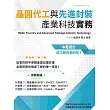A top-down,layered approach to computer networking. Unique among computernetworking texts, the 8th Edition, Global Edition, of thepopular Computer Networking: A Top Down Approach buildson the authors' long tradition of teaching this complex subject through alayered approach in a "top-down manner." The text works its way from theapplication layer down toward the physical layer, motivating students byexposing them to important concepts early in their study of networking.Focusing on the Internet and the fundamentally important issues of networking,this text provides an excellent foundation for students in computer science andelectrical engineering, without requiring extensive knowledge of programming ormathematics. The 8th Edition, Global Edition, has been updatedto reflect the most important and exciting recent advances in networking,including the importance of software-defined networking (SDN) and the rapidadoption of 4G/5G networks and the mobile applications they enable.
本書特色
- A balanced presentation focuses on the Internet as a specific motivating example of a network and also introduces students to protocols in a more theoretical context.
- UPDATED - Expanded and significantly updated coverage reflects the swift rise in importance of software-defined networking (SDN) and the rapid adoption of 4G/5G networks and the mobile applications they enable arguably the most important and exciting advances in networking in decades.
- UPDATED - Individual chapters have been updated to reflect changes in the field of computer networking:
- Chapter 1 has been updatedto reflect the ever-growing reach and use of the Internet, and of 4G/5Gnetworks.
- Chapter 2, which coversthe application layer, has been significantly updated, including material onthe new HTTP/2 and HTTP/3 protocols for the Web.
- Chapter 3 has been updatedto reflect advances in, and evolution in use of, transport-layer congestioncontrol and error control protocols over the past five years. Updated coverageincludes expanded examinations of TCP CUBIC, the default TCP protocol in manydeployed systems, and delay-based approaches to congestion control, includingthe new BBR protocol, which is deployed in Googles backbone network.Additional coverage studies the QUIC protocol, which is being incorporated intothe HTTP/3 standard.
- Chapter 4, whichcovers the network-layer data plane, has general updates throughout. Anew section is included on so-called middleboxes, which perform network-layerfunctions other than routing and forwarding, such as firewalling and loadbalancing. Timely new material is included on topics such as the amount ofbuffering that is just right in network routers, net neutrality, and thearchitectural principles of the Internet.
- Chapter 5, which coversthe network-layers control plane, contains updated material on SDN, and asignificantly new treatment of network management. The use of SDN has evolvedbeyond management of packet-forwarding tables to include configurationmanagement of network devices as well. Two new protocols are introduced,NETCONF and YANG, whose adoption and use have fueled this new approach towardsnetwork management.
- Chapter 6, which coversthe link layer, has been updated to reflect the continuing evolution oflink-layer technologies such as Ethernet. Also included is an updated andexpanded treatment of datacenter networks, which are at the heart of thetechnology driving much of todays Internet commerce.
- Chapter 7 has beensignificantly updated and revised to reflect the many changes in wirelessnetworking since the 7th edition, from short-range Bluetooth piconets, tomedium-range wireless 802.11 local area networks (WLANs), to wide-area 4G/5Gwireless cellular networks. Coverage of earlier 2G and 3G networks is retiredin favor of a broader and deeper treatment of todays 4G LTE networks andtomorrows 5G networks. Updated coverage of mobility issues, from thelocal issue of handover of mobile devices between base stations to the globalissue of identity management and mobile device roaming among global cellularprovider networks, is provided.
- Chapter 8, which coversnetwork security, has been updated to reflect changes in wireless networksecurity in particular, with new material on WPA3 security in WLANs, and mutualdevice/network authentication and confidentiality in 4G/5G networks.
- Principles and Practice boxes throughout demonstrate real-world applications of the principles studied.
- Case History boxes help tell the story of the history and development of computer networking.
- Material on application programming development is included, along with numerous programming assignments.
- A highly developed art program enhances the descriptions of concepts.
- VideoNotepresentations, programming assignments, Wireshark labs, and additional technicalmaterial are available on the Companion Website at http://www.pearsonglobaleditions.com/.



 天天爆殺
天天爆殺  今日66折
今日66折 






















![幼兒園教保活動課程:幼兒學習評量手冊[113年03月初版9刷]](https://im1.book.com.tw/image/getImage?i=https://www.books.com.tw/img/001/098/43/0010984394.jpg&v=65eae924k&w=110&h=110)

 博客來
博客來 博客來
博客來 博客來
博客來 博客來
博客來 博客來
博客來